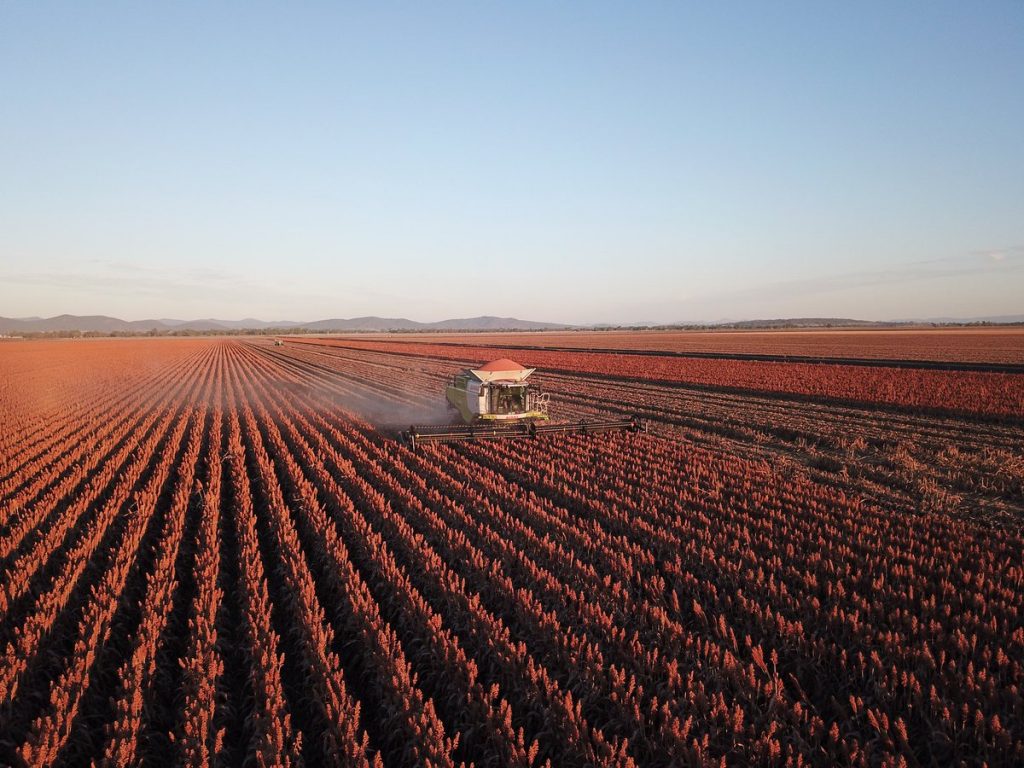



Article by: Hari Yellina
Unexpected severe rain in southern Queensland just before sorghum and mung bean crops were about to be harvested has put yet another kink in the gears of what was shaping up to be the country’s biggest summer crop in a decade. Over the weekend, there were unwelcome rains of up to 100mm, particularly in the southern Darling Downs, with several locations receiving close to 200mm in the last fortnight, creating serious flooding on the Balonne and Condamine Rivers.
While initial sorghum crops picked in the western Downs near Dalby before the strong autumn rains were bin-bursters, yield forecasts for the unharvested crop will be adjusted back due to a combination of reduced grain test weight and shelling, when seed is released onto the ground. “Yield losses could be around 10-15% compared to what we were seeing previous to the rain, but nothing is certain until we go back out in the paddock,” said Trevor Philp, Pacific Seeds grain sorghum agronomist. While farmers hoped to prevent severe yield losses, he predicted that grain quality will suffer.
“We’re seeing a lot of shot and sprung sorghum, so farmers will get a price discount there, which is unfortunate,” Mr Philp said. On the plus side, there’s still a good market out there for feed grain, so the discount for downgraded sorghum is just around $40 a tonne right now. Sorghum 2 is worth roughly $280/t, whereas top quality sorghum is worth around $320/t. Mr Philp added that paddock trafficability and the anticipated colder and wetter autumn weather were also big concerns for summer grain growers.
Like sorghum, it’s quite frustrating because many of the crops appear to be in excellent condition. Hopefully, there won’t be too much of a yield penalty for farmers, and downgrading will be kept to a minimal. Prices range from $1300 per tonne for top quality mung beans to $1100-1200 for processing and manufacturing grade goods, which is utilised for human consumption, but the largest drop occurs when the grain is downgraded to stock feed, when it is only worth roughly $500 per tonne. Cotton growers, according to Mr Taylor, are also concerned. “They’ve had a terrific season up till now, similar to grain producers, but with picking well and truly on the horizon, there are fears about what rain could do to ripe bolls.”
“With cotton pickers weighing up to 29 tonnes, there are serious concerns about getting onto the paddocks if they remain wet.” The rain, according to Mr Taylor, may potentially pose a threat to the winter crop. “Some growers are predicting that even with regular autumn circumstances, such as 20mm of rain here and there, getting the winter crop in will be extremely tough. “We’re currently having to spray many times to keep weeds under control, and because of the rain, a lot of it is now being done aerially, so folks are spending $40/ha just for a basic glyphosate mix, with specialised chemicals costing much more, so it’s really adding up. “The moisture should set us up well for the winter crop eventually but there are certainly a lot of associated challenges.”